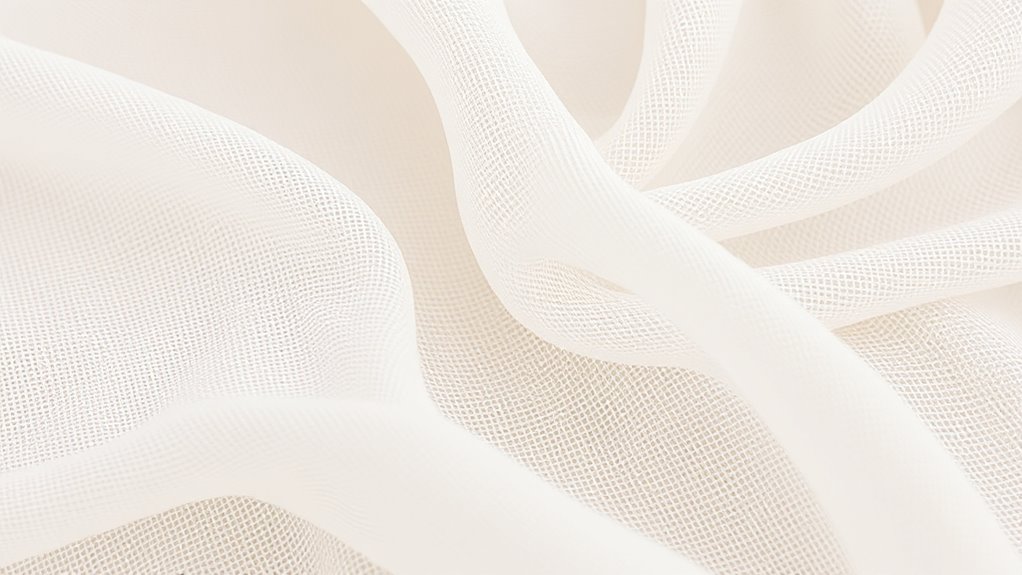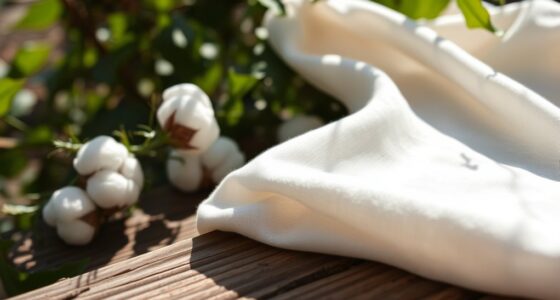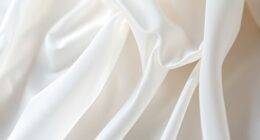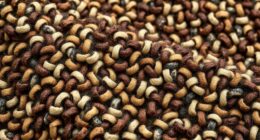To understand lightweight semi-synthetic fibers, you need to grasp how modals express certainty, possibility, and obligation. Words like “can,” “must,” and “might” help you see how durable, eco-friendly, or suitable these fibers are for different uses. Using modals allows you to communicate whether qualities are confirmed or just potential. If you continue exploring, you’ll discover how these words shape perceptions and better inform your choices about these versatile textiles.
Key Takeaways
- Modals express different levels of certainty and obligation when describing the properties of lightweight semi-synthetic fibers.
- They help communicate the fiber’s durability, environmental impact, and suitability with nuanced opinions.
- “Can” indicates a fiber’s ability to withstand washing, while “must” suggests high confidence in its durability.
- Modals like “may” and “might” reflect possibilities or tentative claims about sustainability and eco-friendliness.
- Proper use of modals clarifies whether statements about fiber qualities are definitive, possible, or recommended.

Have you ever wondered how we express possibility, necessity, or permission in English? These concepts are often conveyed through modal verbs, which add nuance and clarity to our sentences. Understanding how these modals work isn’t just about grammar; it’s about grasping how language reflects reality and influences perceptions. When discussing materials, especially in the context of modern textiles like lightweight semi-synthetic fibers, using the correct modal can highlight important qualities such as environmental impact and fabric durability. For instance, if you’re considering a fabric made from a lightweight semi-synthetic fiber, you might want to emphasize its durability or its eco-friendliness. Using modals like “can,” “must,” or “might” helps you communicate these traits effectively.
Lightweight semi-synthetic fibers, such as modal, are often praised for their fabric durability. You can say, “This fabric can withstand frequent washing,” which signals its resilience to wear and tear. Conversely, if you’re unsure about its longevity, you might say, “This fabric might last for several years,” which indicates a possibility rather than a certainty. Modals give you the flexibility to communicate different levels of confidence about a product’s qualities. When it comes to environmental impact, modals are equally useful. You might state, “This fiber must have a lower environmental impact,” if there’s strong evidence to support that claim, or “This fiber may be more sustainable than traditional fabrics,” if you’re discussing an educated guess.
Using modals correctly allows you to express not just facts but also your degree of certainty or obligation regarding the environmental benefits or fabric durability of lightweight semi-synthetic fibers. For example, “Manufacturers should consider using this fiber due to its eco-friendly properties,” implies a recommendation or obligation. On the other hand, “Consumers might prefer this fabric because it’s durable and sustainable,” presents a possibility that appeals to personal choice or perception. Modals therefore serve as powerful tools in discussing the advantages and limitations of these innovative textiles. They help you communicate nuanced opinions about environmental impact, durability, and other qualities without overcommitting.
Frequently Asked Questions
How Does Modal Compare to Other Semi-Synthetic Fibers?
You’ll find that modal is softer than many semi-synthetic fibers, offering a luxurious feel against your skin. It also excels in fabric durability, maintaining its shape and color longer than fibers like viscose or rayon. Compared to other semi-synthetics, modal’s blend of softness and strength makes it ideal for comfortable, long-lasting clothing. Overall, it provides a superior balance of fiber softness and fabric durability, making your garments both cozy and resilient.
Is Modal Environmentally Sustainable?
You might find that modal is relatively environmentally sustainable because it has a lower environmental impact than some other fibers. It’s made from sustainably sourced beech trees, which helps conserve resources. However, the production process involves chemical treatments that can affect resource sustainability. To minimize your environmental impact, select modal made from eco-friendly manufacturing methods, and look for certifications that ensure responsible resource use and reduced environmental harm.
Can Modal Be Recycled Easily?
You can recycle modal, but it faces recycling challenges due to its semi-synthetic nature. The fiber’s chemical structure makes it harder to break down compared to natural fibers, which complicates recycling efforts. While modal is more eco-friendly than some alternatives, exploring eco friendly alternatives with easier recycling options can help reduce environmental impact. Ultimately, improving recycling processes for modal could make it a more sustainable choice.
What Are Common Uses for Modal Fabric?
Imagine wrapping yourself in a cloud—that’s how soft modal fabric feels. You’ll find it commonly used in clothing like underwear, t-shirts, and pajamas because of its exceptional fabric softness and excellent dye absorption. Its lightweight nature makes it perfect for breathable, comfortable garments. When you choose modal, you enjoy vibrant colors and long-lasting softness, making it a favorite for everyday essentials and luxurious loungewear alike.
How Does Modal Care Differ From Cotton?
You’ll find that caring for modal differs from cotton mainly in maintaining its fiber durability and texture softness. Wash modal in cold water and avoid high heat to prevent shrinking and damage, as it’s more delicate. Unlike cotton, which tolerates frequent washing and rougher treatment, modal needs gentler handling to keep its smooth feel and resilience. Dry flat or hang to dry to preserve its quality over time.
Conclusion
Now that you know about modal’s lightweight, semi-synthetic nature, you’ll appreciate its softness and durability. Did you know that modal fibers are produced using 50% less energy than traditional cotton? This eco-friendly process makes modal a popular choice for comfortable, sustainable clothing. So, next time you wear something soft and smooth, remember it might just be made from this innovative fiber, blending comfort with eco-consciousness effortlessly.








